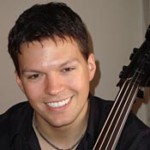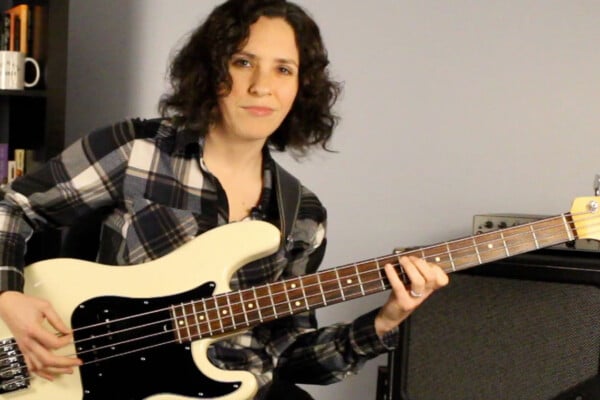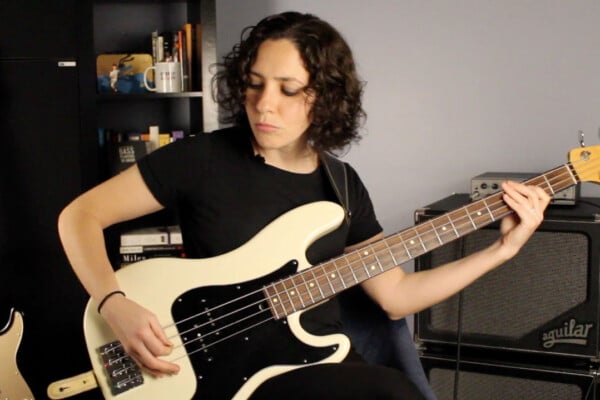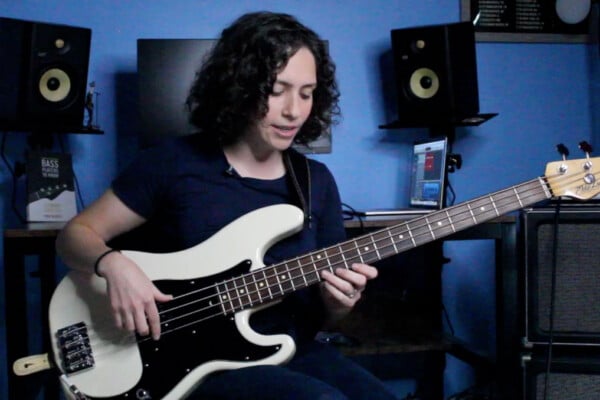Double Stops on the Upright Bass
The upright bass is frequently classified as a “single-line” instrument. In other words, the bass produces a single line of tones and does not play polyphonically. This is certainly the rule in many cases, but there are times where adding additional chord tones to your playing, especially in solos, can add a new dimension of depth to your sound. Given the size and spacing of the strings it is difficult to continuously sound more than two notes at once with the bow (after all it can only move in a single plane), but we can take advantage of the natural resonances of open strings to create rich chordal sounds. In this lesson we’re going to work on fundamental drills to increase your agility with simultaneous string playing.
The first thing to do is to get used to playing two strings at the same time with your bow. You may find that you need to increase the weight of your bow and slow down the speed of draw across the strings to get a consistent sound. Work playing the open D and open G strings together until you are satisfied with the sound quality. Then move to the A and D strings together, finally playing the E and A strings. As you move to the larger strings you’ll discover that the bow needs to be drawn more and more slowly to keep a consistent tone. After you are comfortable playing with the open strings together, start playing scales harmonized with the root for D and A major.
Exercise 1: Your going to play a fully harmonized D major scale with the open D sounding at all times. That means you cannot finger any of the notes on the D string. In this exercise you will play the D, E and F# on the A string with the open D string, then play open G, A, B, C# and D on the G-string with the open D string. It’s a non-linear pattern, but it works for playing this scale over a drone.
Exercise 2: Repeat exercise 1, but transpose it to an A-major scale using the open-A string for harmonizing.
Exercise 3: Now that you’re getting the sound of the harmonies in your head, try improvising a line in D and A major using the open strings to create an ongoing drone under your melody. Remember that you may have to use more non-conventional fingerings to keep the drone going (like we did in Exercise 1). Try not to limit yourself just to two strings, if your drone is on the D string make sure your melody moves on the G, A and E strings.
Now it’s time to add a new dynamic to the bow control .We’re going to play two strings simultaneously with different rhythms. This is not an easy exercise. Start slow and work your way up. It’s much better to play it slowly and have a consistent tone that try to rush through the drills. Focus on the weight of your bow and where it lands during the pulsed notes.
Exercise 4: Play the following passage on the D and G strings. In the first two measure the G string acts as the constant drone while the D string is played over the first two beats of the measure. Focus on keeping a consistent drone. The common pitfall is that the G will sound differently when you lift your bow from the D string – experiment with different ways to keep it consistent. The second two measures is the inverse, now you have to keep the D as the drone string. Notice that each measure is a single up or down bow – try to use the whole bow when you play each exercise.

Figure 1: Playing with a Drone – Half notes
Exercise 5: Repeat exercise 4, but with a slight alteration. Keep the drone tones the same, but play other tones as quarter notes.

Figure 2: Playing with a Drone – Quarter notes
Exercise 6: Now we’re going to expand on Exercise 5 and play the full G-major scale over the D drone as quarter notes. You want to play the full octave all on the G string while maintaining the drone. The figure shows the first 5 bars of the ascending scale.

Figure 3: Playing with a Drone – G major scale
Exercise 7: Repeat Exercise 6 with the inverted pattern – that is the drone will now be a quarter note pulse and the scalar tones will be tied half notes. Again, here are the first 5 bars:

Figure 4: Playing with a Drone Pulse – G major scale
Once you have these worked out you’ll be ready to start adding more complexity on your own. These exercises are all very introductory for this concept, start expanding! You can vary the rhythms as much as you want between the two strings, start putting the non-drone notes on other beats – try 1 and 4, 2 and 3, and other note combinations (eighth notes or triplets). Obviously this does not need to end with a droning open-string either, you can harmonize with other chord tones as well. The open-string drone is a great place to start because it frees your left hand from additional complexity and forces you to focus on the bow. Keep working with this concept and eventually you’ll be able to integrate it into your normal playing. Your goal should be to challenge yourself with as many different rhythmic combinations as possible, that way you’ll always be prepared.




Nice Evan!
Nice Evan!